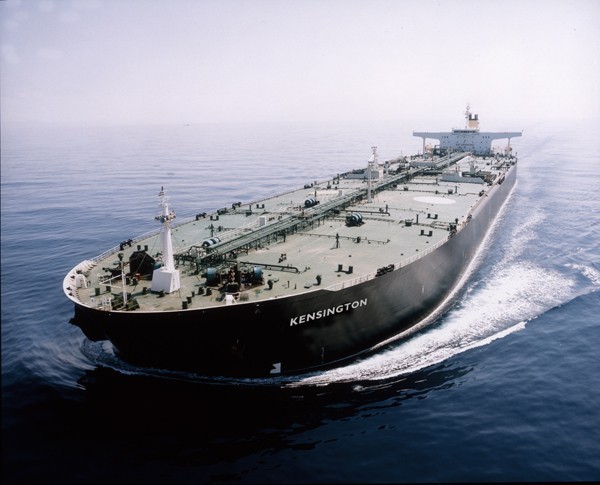Trump Tariffs on Russia’s Oil Buyers Bring Economic, Political Risks
From punishing Brazil to trying to curb imports of fentanyl, U.S. President Donald Trump has wielded the threat of tariffs as an all-purpose foreign policy weapon.

VLCC Kensington, image (c) Knightsbridge
(Bloomberg) The supply of the largest crude tankers to haul Middle East oil is contracting as the vessels sail instead to West Africa, where the flow of cargoes is increasing, ship owner Dynacom Tankers Management Ltd. said.
Seventy-six very large crude carriers are available to load 2 million-barrel cargoes in thePersian Gulf over the next four weeks, the fewest since Oct. 1, Kevin Sy, a Singapore-based freight-derivatives broker at the Marex Spectron Group, said by e-mail today. Ship owners’ earnings jumped more than eightfold to $5,951 a day, according to the London-based Baltic Exchange.
Some vessels are sailing directly to West Africa and avoiding the Persian Gulf once they have delivered cargoes to refineries in Asia, Odysseas Valatsas, chartering manager for the Athens-based Dynacom, Greece’s second-largest operator of the tankers, said by e-mail today. Nigeria and Angola will boost their combined shipments by at least 9 percent next month to 3.98 million barrels a day, the largest amount since August, according to loading programs compiled by Bloomberg News.
“Winter demand for crude cargoes has kicked in, with more vessels being booked,” Valatsas said. “VLCCs have taken cargoes east and, after unloading, returned to West Africa, further reducing the supply of VLCCs in the Persian Gulf.”
It’s the first time since July owners’ returns have been positive for three consecutive days. The earnings are still less than the $10,670 that Moore Stephens LLC estimates the vessels require to cover crew, insurance and other operating costs. Rates for the vessels will average $21,000 this year, according to 14 analyst estimates compiled by Bloomberg.
Owners are contending with fleet capacity that expanded more than three times faster than cargo demand since 2008 after adding the most new vessels since the start of the 1980s, according to data from Clarkson Plc (CKN), the world’s largest shipbroker.
The cost of bunkers, or ship fuel, fell 0.7 percent to $609.46 a metric ton today, according to data compiled by Bloomberg. That’s the cheapest fuel costs since July 25, the data showed. The decline is giving a bigger boost to earnings than any short-term contraction in ship supply, according to Arctic Securities ASA, an Oslo-based investment bank.
The Baltic Exchange’s earnings formula doesn’t take into account the fact ships cut speed to lower fuel consumption. VLCCs can earn about $11,000 a day by sailing on the empty leg of journeys at 10 knots, compared with a typical speed of about 13 knots, according to Arctic.
Charter costs for tankers on the voyage to Asia gained 6.8 percent to 40.31 industry-standard Worldscale points today, exchange data showed. That’s the highest since June 29.
The Worldscale system is a method for pricing oil cargoes on thousands of trade routes. Each individual voyage’s flat rate, expressed in dollars a ton, is set once a year. Today’s level means hire costs on the benchmark route are 40.31 percent of the nominal Worldscale rate for that voyage.
The Baltic Dirty Tanker Index, a broader measure of oil- shipping costs that includes vessels smaller than VLCCs, added 1.9 percent to 680, the highest since Oct. 25, according to the bourse.
– By Rob Sheridan ©2012 BLOOMBERG

Sign up for gCaptain’s newsletter and never miss an update

Subscribe to gCaptain Daily and stay informed with the latest global maritime and offshore news
Essential news coupled with the finest maritime content sourced from across the globe.
Sign Up